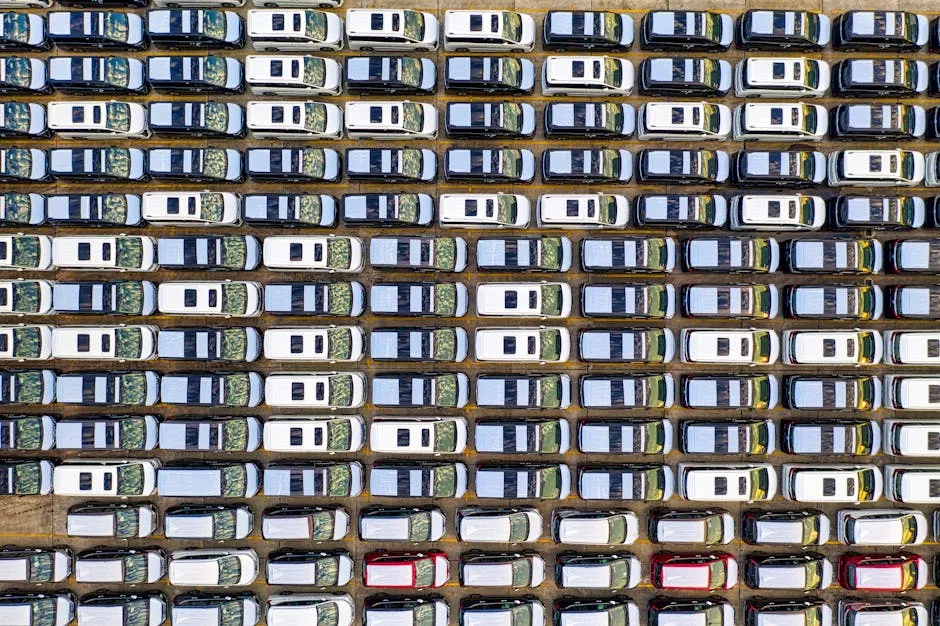European Auto Industry at a Crossroads: Chinese Dragons, Price Wars, and the Bulgarian Phenomenon
While giants like Volkswagen and Renault fight for survival and Stellantis loses ground, Chinese brands are rapidly seizing the market. Analysis shows the industry's future is being decided not just in Brussels, but in markets like Bulgaria.
BRUSSELS/SOFIA - The European automotive market is undergoing a tectonic shift, the most significant in recent decades. The era of predictable dominance by German, French, and Italian brands is coming to an end. Against a backdrop of stagnating demand, regulatory pressure, and a painful transition to electric vehicles, a wave of ambitious and aggressive Chinese brands has flooded the continent. This confrontation has already led to price wars, is changing consumer preferences, and calls into question the very survival of some historic giants.
The Big Picture: A Stagnant Market with an Internal Storm
According to the latest data from the European Automobile Manufacturers' Association (ACEA), the EU market showed only symbolic growth of +0.8% in 2024, reaching approximately 10.6 million vehicles. However, behind this figure lies a real revolution. The market share of diesel cars has collapsed to 11.9%. Even the growth of battery electric vehicles (BEVs) has slowed, with their share at 13.6%. The true kings of the market are becoming gasoline cars (33.3%) and, most importantly, hybrid electric vehicles (HEVs), which have rapidly gained popularity to capture 30.9% of the market. Consumers, wary of high EV prices and underdeveloped infrastructure, are choosing hybrids as a safe and pragmatic transitional option.
Battle of the Titans: The Great Divergence in Europe
The pressure from China and the shift in technology have affected the European titans differently:
- Volkswagen Group: The German giant holds its lead with a 26.3% market share, showing slight growth. Its success is driven by the strong positions of its subsidiary brands like Skoda and Seat/Cupra, which offer consumers familiar and high-quality vehicles.
- Renault Group: The French are also in positive territory, largely thanks to their budget brand Dacia, which is breaking sales records. Their strategic bet on affordable hybrid technologies and the launch of the iconic Renault 5 as an electric model are paying off so far.
- Stellantis (Peugeot, Citroën, Fiat, Opel): This conglomerate has become the biggest loser. Its market share in Europe has fallen below 15%, and sales for most of its key brands have significantly declined. In response, Stellantis is rushing to launch budget EVs like the Citroën ë-C3 and Fiat Grande Panda, entering a direct price war with its Chinese competitors.
The Dragon Spreads Its Wings
The expansion of Chinese brands is phenomenal. From 2019 to 2024, car imports from China to the EU grew by more than 1500%. Their strategy is multifaceted and clever: they not only offer affordable EVs but are also actively developing a lineup of plug-in hybrids (PHEVs), which are not subject to the same EU tariffs. The victory of BYD, which outsold Tesla in Europe in one month of 2025, became a symbolic milestone.
To avoid high import duties (up to 35.3% for some brands), Chinese companies are moving to the next stage: localization. BYD is building a factory in Hungary, and Chery is building one in Spain. They no longer want to be just importers; they aim to become full-fledged European manufacturers.
The Bulgarian Phenomenon: A Unique Market as a Battlefield
Against the backdrop of general stagnation in the EU, Bulgaria's automotive market is showing explosive growth—+36.6% in 2024. However, this market operates by its own rules. Gasoline cars still dominate here with a 79.1% share, and the EV penetration rate is one of the lowest in the union. The reason is simple: the population's purchasing power, which is 34% lower than the EU average, and a still-developing charging infrastructure.
Bulgarian consumers choose proven and practical models like the Skoda Octavia and Toyota Corolla. This is precisely why Bulgaria is becoming a key battlefield for the budget segment. Brands like Geely, Lynk & Co, Dongfeng, and Haval have already entered or announced their debut. Their inexpensive and well-equipped crossovers compete directly with Dacia and Skoda, and their initial sales show that the Bulgarian consumer is willing to give them a chance.
The Future is Decided Today: Software, Batteries, and Price
The final battle for the European market will unfold not only in showrooms but also in technology labs and political offices. The upcoming Euro 7 standard will increase the cost of all vehicles, including gasoline ones, due to new requirements for emissions from brakes and tires. The ban on the sale of new internal combustion engine (ICE) cars by 2035 remains the primary driver of electrification.
However, there are deeper challenges. European conglomerates, as demonstrated by Volkswagen's experience with its CARIAD division, are losing to Chinese companies in the speed and flexibility of software development. At the same time, the entire European auto industry is critically dependent on Asian supplies of batteries—the heart of any electric vehicle.
The old automotive order has collapsed. Studies show that a discount of just 10-27% is enough for a European buyer to prefer a Chinese brand. European brands must simultaneously invest billions in new technologies and cut prices. The winner in this struggle will be the one who can offer not just a car, but an affordable, modern digital product with a reliable supply chain. For the consumer, this means one thing: prices will fall, and choices will grow. But the cost to the legendary European industry remains to be seen in the near future.




Коментари (0)
Трябва да влезете ...
Все още няма коментари.